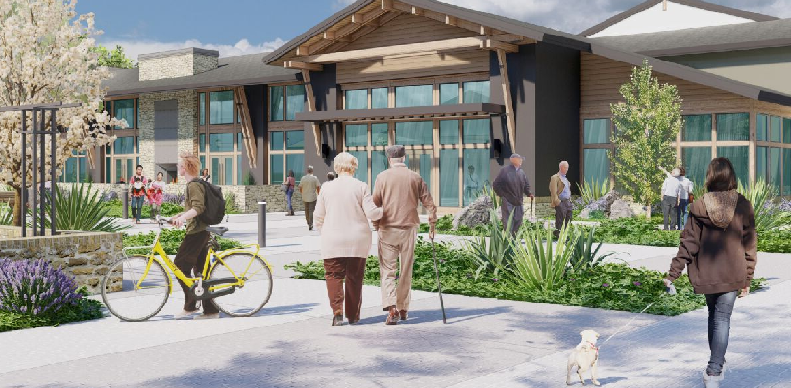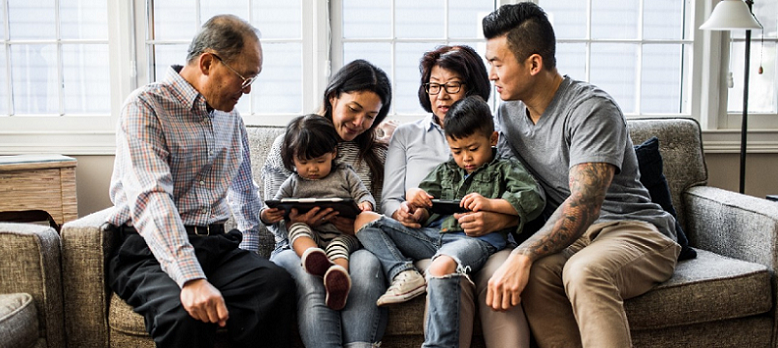Intergenerational living and multi-generational households have become an increasingly popular trend in recent years. With families coming together to share living spaces, there are a number of benefits to be gained, including financial savings, emotional support, social interaction, and improved health. However, there are also challenges to consider, such as balancing individual and communal living arrangements, managing differences in lifestyle and habits, and addressing caregiving responsibilities.
What Are Intergenerational Living and Multi-Generational Households?
Intergenerational living and multi-generational households refer to living arrangements in which two or more generations of a family reside together under the same roof. This could include grandparents, parents, and children, or extended family members such as uncles, aunts, and cousins.
The concept of intergenerational living is not new and has been a common practice in many cultures throughout history. However, in recent years, there has been a resurgence of interest in this type of living arrangement, driven by factors such as the aging of the population, rising housing costs, and a desire for greater family cohesion and support.
Multi-generational households can take many forms, from a large extended family living in a single home, to separate units within a larger shared living space. Regardless of the specific arrangement, the goal of intergenerational living is to create a supportive and inclusive living environment that provides benefits for all generations involved.
Benefits of Intergenerational Living and Multi-Generational Households
Intergenerational living and multi-generational households offer a number of benefits to families. The following are some of the most significant benefits.
Financial Savings
Financial savings is one of the major benefits of intergenerational living and multi-generational households. Sharing living expenses, such as housing, utilities, and groceries, can significantly reduce the financial burden on individual family members. For example, if three generations of a family live together, the costs of housing, utilities, and other living expenses can be split among them, which can result in significant cost savings for each person. Additionally, pooling resources can help families save money on larger expenses, such as home repairs or upgrades.
Another way in which intergenerational living can save families money is by reducing the need for paid care services. For example, if an older adult requires assistance with daily tasks, they can receive help from a family member rather than hiring a caregiver. This can result in significant cost savings and also provide the added benefit of emotional support and companionship.

Emotional Support
Emotional support is another key benefit of intergenerational living and multi-generational households. Living with family members of different generations provides an opportunity for emotional support, companionship, and a sense of community. For older adults, having the opportunity to interact with younger family members can provide a renewed sense of purpose and help reduce feelings of loneliness and isolation. Additionally, living in close proximity to family members can provide a sense of security and comfort, especially for those who may be facing health challenges.
For younger family members, living with older generations can provide a valuable source of guidance, wisdom, and support. This intergenerational exchange can foster a sense of respect and appreciation for different generations and their experiences, as well as provide opportunities for learning and mentorship.
In a multi-generational household, families have the opportunity to support one another through life’s ups and downs, providing a source of comfort and security for all members. The sense of belonging and community that is created through intergenerational living can have a positive impact on the emotional well-being of all family members involved.
Social Interaction
Social interaction is another important benefit of intergenerational living and multi-generational households. Living with family members of different generations promotes social interaction and exposure to different perspectives, which can broaden one’s view of the world and provide opportunities for intergenerational learning and mentorship.
For older adults, living in a multi-generational household can provide opportunities to connect with younger generations and share their experiences, knowledge, and wisdom. This can also help to reduce feelings of loneliness and isolation, as older adults remain active and engaged in the lives of their family members.
For younger family members, living with older generations can provide opportunities to learn from their experiences, develop new skills, and gain a deeper appreciation for their family history and heritage. This can also help to build strong intergenerational relationships and foster a sense of respect and understanding between different generations.
In a multi-generational household, families have the opportunity to engage in social activities together, such as meals, holidays, and other special events. This can help to create a strong sense of community and provide opportunities for all members to connect and bond.

Improved Health
Improved health is a significant benefit of intergenerational living and multi-generational households. Studies have shown that older adults who live with family members tend to have better physical and mental health compared to those who live alone. This is due to a number of factors, including increased social interaction, emotional support, and a sense of purpose.
Living with family members can provide older adults with increased opportunities for physical activity, as they engage in activities such as cooking, cleaning, and other household chores. Additionally, the emotional support and companionship provided by family members can help to reduce feelings of loneliness and depression, which are known risk factors for declining health in older adults.
For younger family members, living with older generations can provide opportunities for intergenerational learning, as they gain a deeper understanding of the aging process and the challenges that older adults face. This can help to promote empathy and respect for different generations and foster a sense of family unity and support.
In a multi-generational household, families have the opportunity to support one another’s health and wellness, by sharing responsibilities and providing assistance with tasks such as meal preparation, transportation, and other daily activities.
Enhanced Family Bonds
Enhanced family bonds is a critical benefit of intergenerational living and multi-generational households. Intergenerational living provides families with the opportunity to spend time together and strengthen their bonds, which can have a positive impact on family relationships and overall family dynamics.
Living with family members of different generations provides opportunities for families to engage in shared activities, such as meals, holidays, and other special events. This can help to create a strong sense of community and provide opportunities for all members to connect and bond.
For older adults, living with younger generations can provide a renewed sense of purpose, as they play an active role in the lives of their family members. Additionally, the emotional support and companionship provided by family members can help to reduce feelings of loneliness and isolation, which can have a positive impact on their overall well-being.
For younger family members, living with older generations can provide opportunities to learn from their experiences, develop new skills, and gain a deeper appreciation for their family history and heritage. This can help to build strong intergenerational relationships and foster a sense of respect and understanding between different generations.
In a multi-generational household, families have the opportunity to support one another through life’s ups and downs, providing a source of comfort and security for all members. The sense of belonging and community that is created through intergenerational living can have a positive impact on the emotional well-being of all family members involved.
Sharing of Responsibilities
Sharing of responsibilities is another key benefit of intergenerational living and multi-generational households. In a multi-generational household, families have the opportunity to allocate responsibilities and share caregiver duties, which can help to reduce stress and improve overall family dynamics.
For older adults, living with younger generations can provide support and assistance with tasks such as meal preparation, transportation, and other daily activities. This can help to reduce feelings of loneliness and isolation, as well as provide opportunities for older adults to remain active and engaged in their families.

For younger family members, living with older generations can provide opportunities to support their elders and take on responsibilities, such as caregiving. This can help to promote empathy and understanding between different generations and provide opportunities for intergenerational learning and mentorship.
In a multi-generational household, families have the opportunity to support one another through life’s ups and downs, providing a source of comfort and security for all members. The sharing of responsibilities can help to create a sense of community and promote a positive family culture.
Challenges of Intergenerational Living and Multi-Generational Households
Intergenerational living and multi-generational households, although offering a number of benefits, also come with their own set of challenges that families must be prepared to navigate. One such challenge is space and privacy concerns. Balancing individual and communal living arrangements can be difficult, as family members may have different preferences and needs for space and privacy. It is important for families to address these concerns and find a solution that works for everyone in order to maintain a positive living environment.
Another challenge is managing differences in lifestyle and habits. Family members may have different schedules, routines, and habits, which can lead to conflicts and disagreements. It is important for families to respect individual boundaries and habits, and to find ways to accommodate each other’s needs and schedules.
Managing family dynamics is also a challenge in intergenerational living and multi-generational households. Conflicts and disputes can arise in any family, and it is important for families to have open communication and a positive family culture in order to address these issues and resolve disputes effectively. This can help to maintain a positive and supportive living environment.
Finally, balancing caregiving responsibilities can also be a challenge in intergenerational living and multi-generational households. Allocating responsibilities and sharing caregiver duties can be challenging, as family members may have differing opinions and preferences. Additionally, as family members age, their caregiving needs may change, which can lead to new challenges and responsibilities. It is important for families to work together to allocate responsibilities and support one another as needed.

